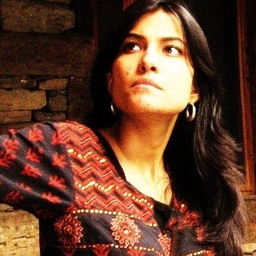
Manoj Sharma
Metro Features Editor at Hindustan Times
Metro Features Editor @htTweets. Pursuing stories that fall through the cracks. #bookworm; a fan of Jagjit Singh, Ian McEwan, Paul Auster, Javier Marías.
Articles
Buses vanish, trains overflow: How public transport in India’s megacities is buckling under pressure
1 week ago |
hindustantimes.com | Manoj Sharma
Last week, four people died and nine others were injured after falling off an overcrowded local train in Mumbai during peak office hours—once again spotlighting the growing crisis of public transport overcrowding in India’s megacities. In Mumbai, the suburban railways—often called the city’s lifeline—are operating far beyond capacity. Trains designed for 2,500 passengers routinely carry more than 5,000 during rush hours.
-
3 weeks ago |
hindustantimes.com | Manoj Sharma
As these structures become an increasingly prominent feature of India’s urban landscape, a key question arises: should skywalks remain just mobility corridors to cross busy roads—or be re-imagined as public spaces that enrich city life? The question is pressing because, despite huge investment in building them, many skywalks remain underused.
-
3 weeks ago |
htsyndication.com | Manoj Sharma
New Delhi, June 2 -- As Indian cities grapple with rising traffic congestion, shrinking footpaths, and unsafe pedestrian infrastructure, skywalks are increasingly seen as a fix. These long, elevated walkways, once a rarity, currently span chaotic intersections and crowded roads in cities such as Delhi, Kolkata, Bengaluru, Mumbai, and Hyderabad. Take Kolkata, for instance. In April, it unveiled a 435-metre skywalk at Kalighat to manage temple-bound crowds.
-
1 month ago |
hindustantimes.com | Manoj Sharma
On Friday afternoon, a day before India and Pakistan called a ceasefire and halted military action, a wail-like sound rang through ITO, in the heart of Delhi. It was a long and metallic cry of an air raid siren atop the PWD building—part of a citywide revival of a wartime warning system. This was one of 500 sirens the Delhi government planned to install across the Capital, reintroducing a civil defence tool that once dictated everyday life during times of conflict.
-
1 month ago |
htsyndication.com | Manoj Sharma
India, May 5 -- Gurugram's skyline glints with mirrored facades, soaring office towers, and luxury condominiums-symbols of aspiration in a globalising India. But to many long-time residents, such as Rajesh Bhardwaj, the city's transformation feels oddly disorienting. Visitors often tell him it reminds them of Dubai. "And I wonder why that is a compliment," he asks.
Journalists covering the same region
Kamesh Srinivasan
Sports Reporter at The Hindu
Kamesh Srinivasan primarily covers news in New Delhi, Delhi, India and surrounding areas including Gurgaon and Noida.

Ifrah Mufti
Journalist at The New Indian Express
Ifrah Mufti primarily covers news in New Delhi, Delhi, India and surrounding areas.
Badar Bashir
Correspondent at The Week (India)
Badar Bashir primarily covers news in New Delhi, Delhi, India and surrounding areas.

Rhythma Kaul
Dy Health Editor at Hindustan Times
Rhythma Kaul primarily covers news in New Delhi, Delhi, India and surrounding areas including Gurgaon and Noida.
Deepshikha Ghosh
Managing Editor at NDTV
Deepshikha Ghosh primarily covers news in New Delhi, Delhi, India and surrounding areas.
Try JournoFinder For Free
Search and contact over 1M+ journalist profiles, browse 100M+ articles, and unlock powerful PR tools.
Start Your 7-Day Free Trial →Coverage map
X (formerly Twitter)
- Followers
- 882
- Tweets
- 2K
- DMs Open
- Yes

RT @mostlyeconomics: Index mutual funds turn 50 in 2025. My article on how theory and practice of finance created silent revolution named i…

RT @livemint: Fear, loss and a deathly silence pervade the tourist hotspot that was bustling with visitors until 22 April. A ground report…

RT @Csoumya21: Capital alerts: Delhi’s long tryst with sirens, from World War II to today https://t.co/CPhCIMuKLW via @bookishmanoj